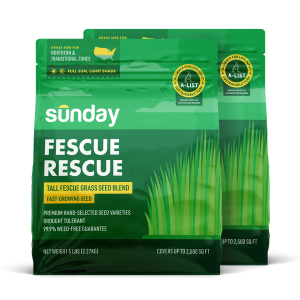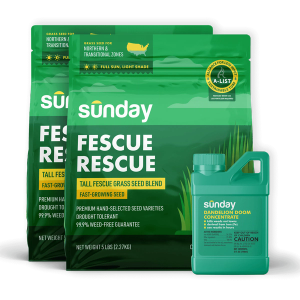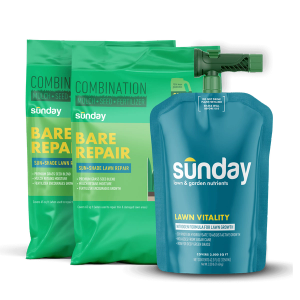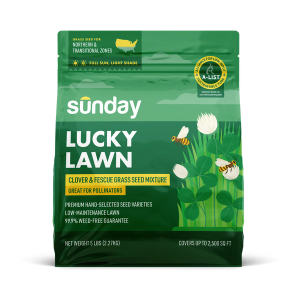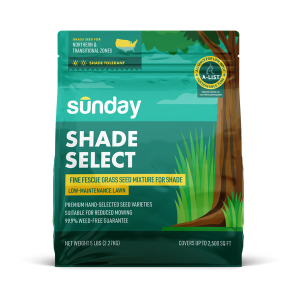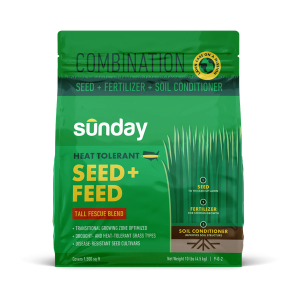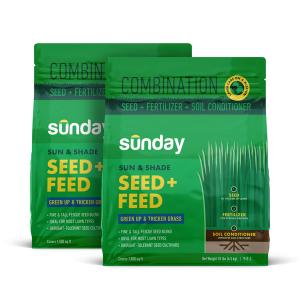What are white grubs in your lawn?
White grubs, also known as lawn grubs or grub worms, are the larvae of various turf pest beetle species, including Japanese beetles and June bugs. These C-shaped, white-colored creatures live in your soil and feed on grass roots. While most lawns can tolerate some grub activity, an infestation can quickly lead to visible damage, especially during hot, dry summer months when your lawn is already under stress.
You have a grub infestation in your lawn if you find more than five grubs per square foot of grass.
How to identify lawn grub damage
The first signs of a grub problem often appear as changes in your lawn's appearance. You might notice lawn areas beginning to thin and turn yellow, showing poor growth despite proper care. These patches can gradually expand, becoming dead zones in your lawn.
Watch for these key indicators:
- Grass that pulls up easily, like peeling back carpet
- Spongy areas that feel like newly-laid sod
- Expanding patches of thin, yellowing grass
- Dead areas that don't respond to watering
Wildlife activity can also signal a grub problem. If you notice skunks, raccoons, moles, or birds digging in your lawn, they're likely hunting for grubs. While these natural predators can help control grub populations, their foraging can cause additional turf damage.
Lawn grub treatment and prevention methods
A successful grub control strategy combines prevention and targeted treatment. Here's what you need to know about different control methods:
Natural grub control methods for your lawn
Maintaining a healthy lawn is your first line of defense.
Keep your grass at a proper height and water deeply but infrequently to encourage strong root growth. Healthy soil supports stronger grass that can better withstand pest pressure.
Best grub killer options and treatments
When treatment becomes necessary, consider these approaches:
Integrated Pest Management (IPM)
Integrated Pest Management (IPM) is a natural solution that can improve grass resilience to feeding, prevent pests, and allow beneficial insects or wildlife to feed on grubs in your yard.
- Encourage natural predators
- Plant better grass varieties
- Apply targeted treatments (only when needed!)
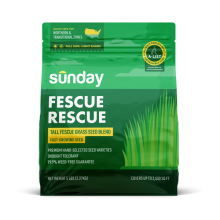
Fescue Rescue Grass Seed
- Drought tolerant
- Medium sunshine
- Medium water
- 99.9% weed-free guarantee
Chemical control
Chemical control — only opt for this method if you have grubs present at the time of application, you’re applying at the right time, and you’re only applying to affected areas to minimize use.
- Use proven biological insecticides in confirmed problem areas
- Apply during late summer to early fall for best results
- Follow product instructions carefully
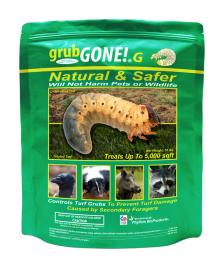
grubGONE! Biological Insect Control
grubGONE! is safe and effective to use from spring through fall in regions with damaging grub activity.
- Apply with spreader for easy use
- Store in a cool, shaded area away from direct sunlight
- Each 10 lb. bag covers 5,000 square feet
- Has 24-month shelf life
When to apply grub control products
The most effective time to treat grubs is during late summer through early fall, when grubs are young and feeding near the surface. Spring treatments are generally less effective because grubs are larger and deeper in the soil. Monitor your lawn regularly during summer months when adult beetles are active and laying eggs.
Sunday Tip:
Remember that a healthy turf with a few grubs may not need insecticide. When healthy turf is supported by natural rainfall or irrigation, it can withstand a small grub population if there's not significant turf damage.
Lawn repair after grub damage
After treating a grub problem, focus on helping your lawn recover. Repair damaged areas through reseeding or sodding, and maintain proper watering and seasonal fertilization.
Regular monitoring for beetles helps catch future grub problems early when they're easier to address.
Get a custom lawn plan
Our lawn engine uses satellite data to map out your lawn size and determine things like average rainfall, common weeds, and pest activity.
Cited sources
Controlling Turfgrass Grubs. Cornell Extension.







